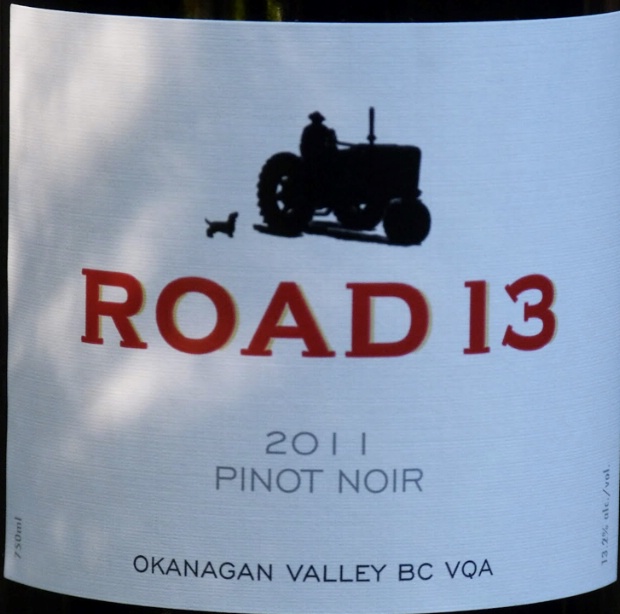
External search
Google (images)
Wine Advocate
Wine Spectator
Burghound
Wine-Searcher
Vintages
2018
2016
2013
2012
2011
2010
2009
2008
2007
From this producer
Show all wines
All tasting notes
|
| Drinking Windows and Values |
| Drinking window: Drink between 2011 and 2014 (based on 7 user opinions) |
| Community Tasting History |
| Community Tasting Notes (average 87 pts. and median of 88 pts. in 6 notes) - hiding notes with no text | | | Tasted by weiny on 2/5/2012 & rated 89 points: Sehr tiefe Frucht in der Nase. Leicht Würzigkeit und trotzdem Frisch. Eckiger Pinot Noir und daher fein. (1458 views) | | | Tasted by weiny on 8/9/2011 & rated 88 points: Ziemlich fruchtig Pinot-Nase. Knackige Säure am Gaumen und schönes Fruchtspiel im Abgang (1529 views) | | | Tasted by crowino on 4/9/2011 & rated 85 points: Fresh berry nose with a hint of cedar and barnyard, but not so much of that last one.. Bright fruit on the entry, very soft, not much benefit to age this, tannins totally in check, maybe even lacking.. Very good acid. I think the only thing lacking is some more structure.. (1653 views) | | | Tasted by weiny on 12/29/2010 & rated 88 points: Filigran und leicht würzig (1783 views) | | | Tasted by Weston3220 on 5/20/2010: BC WINES, Bloom: Delicious Cherry Skin. Its Delicious, but it doesn't add any thing else to that one tasty note (2677 views) |
| Road 13 Producer Website
Producer Location (Google Maps)Pinot Noir Varietal character (Appellation America) | Varietal article (Wikipedia)
Pinot Noir is the Noble red grape of Burgundy, capable of ripening in a cooler climate, which Cabernet Sauvignon and Merlot will not reliably do. It is unpredictable and difficult both to grow and to vinify, but results in some of the finest reds in the world. It is believed to have been selected from wild vines two thousand years ago. It is also used in the production of champagne. In fact, more Pinot Noir goes into Champagne than is used in all of the Cote d'Or! It is also grown in Alsace, Jura, Germany, the U.S., Canada, Australia, New Zealand, Romania, Switzerland, Austria, Croatia, Serbia, Italy, and so forth, with varying degrees of success.
Pinot Noir is one of the world's most prestigious grapes. It is very difficult to grow and thrives well in France, especially in Champagne and Burgundy. Pinot Noir thrives less in hot areas, is picky on soil, and deserves some oak storage.
Pinot Noir, or Blauburgunder / Spätburgunder in German, is a blue grapevine - and, as the German name suggests, the grape comes originally from Burgundy in France.
The grape, which thrives in calcareous soils, is used primarily for the production of red wine, and it is widely regarded as producing some of the best wines in the world. The wine style is often medium-bodied with high fruit acidity and soft tannins. It can be quite peculiar in fragrance and taste, and not least in structure - which may be why it is referred to as "The Grapes Ballerina".
Pinot Noir is also an important ingredient in sparkling wines, not least in champagne since it is fruity, has good acidity and contains relatively little tannins.
The grape is considered quite demanding to grow. The class itself consists of tightly packed grapes, which makes it more sensitive to rot and other diseases.
Pinot Noir changes quite easily and is genetically unstable. It buds and matures early which results in it often being well ripened. Climate is important for this type of grape. It likes best in cool climates - in warm climates the wines can be relaxed and slightly pickled.
In cooler climates, the wine can get a hint of cabbage and wet leaves, while in slightly warmer regions we often find notes of red berries (cherries, strawberries, raspberries, currants), roses and slightly green notes when the wine is young. With age, more complex aromas of forest floor, fungi and meat emerge.
In Germany, Switzerland, Austria and Hungary, it often produces light wines with less character. However, it has produced very good results in California, Oregon and New Zealand.
With its soft tannins and delicate aroma, it is excellent for white fish, chicken and light meat. For the stored wines you can serve small game. Classic duck breast is a matter of course, a Boeuf Burgundy and Pinot Noir are pure happiness.
Pinot Noir loses quality by over-harvesting.
Pinot Noir is prone to diseases, especially rot and mildew. Viruses cause major problems especially in Burgundy.
Pinot Noir are large round grapes with thin skins. Relatively high in alcohol content. Medium rich tannins and good with acid.
As a young person, Pinot Noir has a distinctly fruity character such as raspberries, cherries and strawberries.
A mature Pinot Noir, the taste is different. Cherry goes into plum and prune flavors. It smells of rotten leaves, coffee, moist forest floor and animal wine. This must be experienced.
In warm climates you find boiled plum, some rustic, little acid.
If the grapes are over-grown, the wine will be thin, with little color and flavor.Canadahttps://www.winegrowerscanada.ca/
https://en.wikipedia.org/wiki/Canadian_wineBritish Columbia Wines of British Columbia (British Columbia Wine Institute)Okanagan Valley Okanagan Valley (British Columbia Wine Institute)Okanagan Valley VQA Okanagan Valley (British Columbia Wine Institute)
VQA Defined Webpage (British Columbia Wine Institute) |
|




